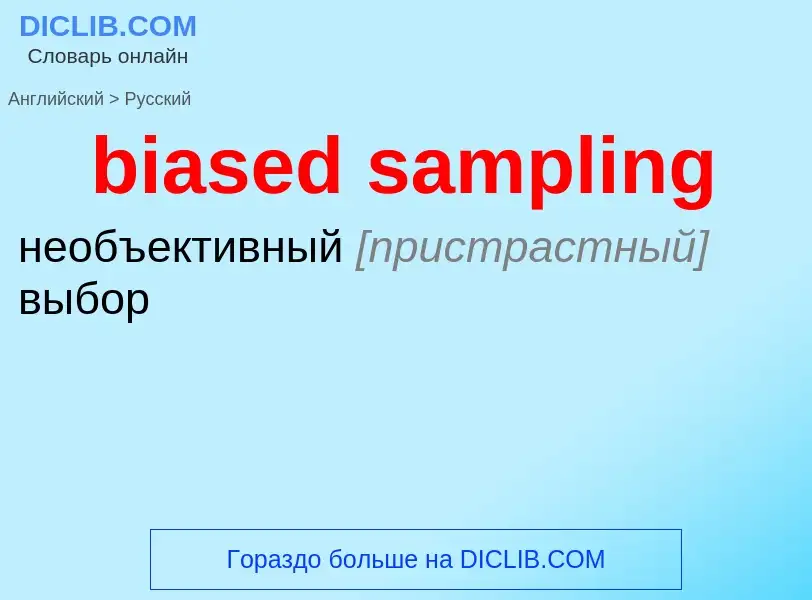Tradução e análise de palavras por inteligência artificial ChatGPT
Nesta página você pode obter uma análise detalhada de uma palavra ou frase, produzida usando a melhor tecnologia de inteligência artificial até o momento:
- como a palavra é usada
- frequência de uso
- é usado com mais frequência na fala oral ou escrita
- opções de tradução de palavras
- exemplos de uso (várias frases com tradução)
- etimologia
biased sampling - tradução para russo
общая лексика
смещённая выборка
смещенная выборка
Definição
Wikipédia
In IEEE 754 floating-point numbers, the exponent is biased in the engineering sense of the word – the value stored is offset from the actual value by the exponent bias, also called a biased exponent. Biasing is done because exponents have to be signed values in order to be able to represent both tiny and huge values, but two's complement, the usual representation for signed values, would make comparison harder.
To solve this problem the exponent is stored as an unsigned value which is suitable for comparison, and when being interpreted it is converted into an exponent within a signed range by subtracting the bias.
By arranging the fields such that the sign bit takes the most significant bit position, the biased exponent takes the middle position, then the significand will be the least significant bits and the resulting value will be ordered properly. This is the case whether or not it is interpreted as a floating-point or integer value. The purpose of this is to enable high speed comparisons between floating-point numbers using fixed-point hardware.
To calculate the bias for an arbitrarily sized floating-point number apply the formula 2k−1 − 1 where k is the number of bits in the exponent.
When interpreting the floating-point number, the bias is subtracted to retrieve the actual exponent.
- For a single-precision number, the exponent is stored in the range 1 .. 254 (0 and 255 have special meanings), and is interpreted by subtracting the bias for an 8-bit exponent (127) to get an exponent value in the range −126 .. +127.
- For a double-precision number, the exponent is stored in the range 1 .. 2046 (0 and 2047 have special meanings), and is interpreted by subtracting the bias for an 11-bit exponent (1023) to get an exponent value in the range −1022 .. +1023.
- For a quad-precision number, the exponent is stored in the range 1 .. 32766 (0 and 32767 have special meanings), and is interpreted by subtracting the bias for a 15-bit exponent (16383) to get an exponent value in the range −16382 .. +16383.



